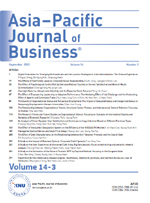우리나라 선박 수출의 국민경제적 파급효과 분석: 혼합 산업연관모형을 이용하여
Analysis of the National Economic Ripple Effects of Korea's Ship Exports: Using a Mixed Input-Output Model
- 강원대학교 경영경제연구소
- 아태비즈니스연구
- 제16권 제1호
-
2025.03467 - 481 (15 pages)
-
DOI : 10.32599/apjb.16.1.202503.467
- 20

Purpose - The purpose of this study is to analyze the economic ripple effects of ship exports in the shipbuilding industry. Design/methodology/approach - This study used the 2022 national input-output table, the most recent data published by the Bank of Korea in 2024. This study, also, applied a mixed input-output model for empirical analysis. Findings - First, in 2024, Korea's ship exports generated a total economic output of 71 trillion 311.67 billion KRW, a value-added of 16 trillion 255.33 billion KRW, and employment for 201,566 people across the national economy. Second, this study found that Korean ship exports had a greater indirect inducing effect on other industries than the direct inducing effect on the shipbuilding industry. Third, this study found that industries with large economic spillover effects from Korean ship exports included primary steel products, processed metal products, general-purpose machinery, precision instruments, wholesale and retail services, business support services, business-related professional services, financial services, science and technology, and other professional services. Lastly, the results showed that Korean ship exports had a production inducement multiplier of 2.155 times, a value-added inducement multiplier of 0.491 times, and an employment inducement multiplier of 6.092 people for the national economy. Research implications or Originality - This study applied a mixed input-output analysis technique to measure the production, value-added, and employment inducing effects of Korean ship exports on the entire economy in numerical units (KRW and persons). Also, this study conducted empirical analysis using the most up-to-date input-output table reflecting the ship production technology structure in the latest shipbuilding industry. In addition, this study utilized the latest ship export statistics linked to HS codes, which is consistent with the sector classification of the Bank of Korea input-output table. Based on this approach, useful policy implications for the growth of the shipbuilding industry were presented.
Ⅰ. 서론
Ⅱ. 자료 및 방법론
Ⅲ. 분석 결과
Ⅳ. 결론 및 시사점
References
(0)
(0)